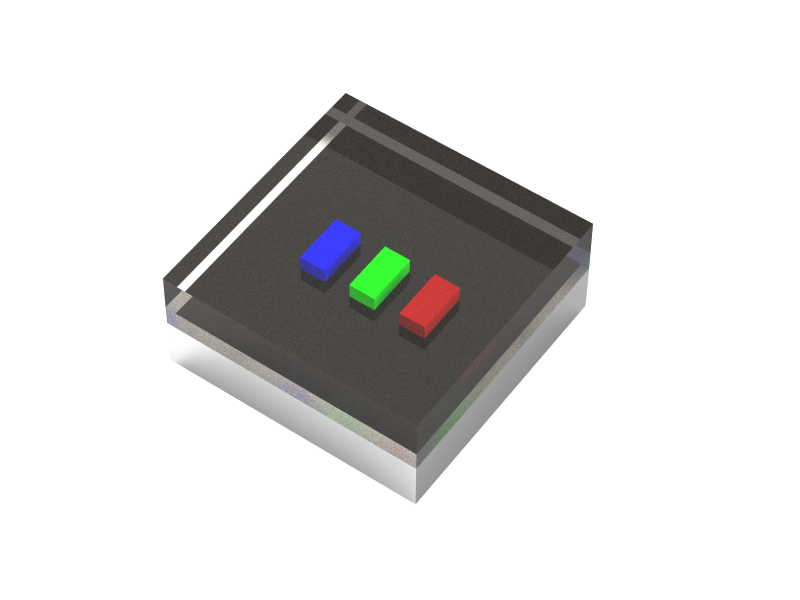If you’re familiar with LED displays, no doubt you’ll find that two screens of the same size and intended for the same application—sometimes with nearly identical basic specifications, for example, in same pixel pitch, and providing the same max brightness—can still differ in price by hundreds or even thousands of dollars. What drives this price gap? A major factor is the LEDs themselves, which form the pixels of an LED display and have a profound impact on overall cost.

High quality LED display usually offers better contrast and rich colors.
So why? Here in this article, we’ll take a closer look at the three key components of LEDs—chips, lead frames, and bonding wires—to explain how the selection of materials differentiates high-end LEDs from their low-cost counterparts, and how these differences influence display performance.
The LED chip is the light-emitting component within the bead. Its quality directly determines luminous efficacy and lifespan. High-end LED beads typically use chips from top-tier domestic or international manufacturers, known for advanced production techniques that deliver higher brightness, greater energy efficiency, and more consistent light output.
In contrast, low-cost LEDs often rely on chips from second-tier suppliers, whose less sophisticated processes result in inferior brightness and poor luminous uniformity. When used in displays, these LEDs frequently cause uneven brightness and visibly dim areas that compromise viewing quality.
The lead frame supports the chip and conducts electrical current. Its material significantly affects the LED’s performance. Generally, LEDs use either copper or iron lead frames.
High-end LEDs predominantly adopt copper lead frames, offering several distinct advantages:
Thermal Conductivity
Among commonly used materials, copper ranks third in thermal conductivity (385–401 W/m·K), trailing only diamond and silver. In comparison, iron’s thermal conductivity is much lower (73–80 W/m·K). Superior heat dissipation reduces the risk of chip overheating, helping maintain consistent brightness and extending service life.
Oxidation Resistance
Copper naturally forms a dense oxide layer that protects it from further corrosion, even in humid or marine environments, where its corrosion rate is only 1/5–1/10 of iron’s. Iron oxide layers, by contrast, are porous and prone to flaking, eventually causing degradation. As a result, copper lead frames ensure stable conductivity and heat dissipation over long-term use.
Mechanical Stability
Copper also better withstands the mechanical stresses generated during operation. Iron frames not only conduct heat and electricity less efficiently but also corrode easily, leading to loose wire bonds and compromised mechanical integrity. This increases the risk of poor contact or complete failure (dead pixels).
Bonding wires connect the LED chip to the pins and conduct current between the two parts of the LED. Bonding wires are usually gold wires, copper wires, or palladium-coated copper wires.
High-end LEDs typically use 99.99% high-purity gold wires. Compared with copper wires, gold wires offer remarkable ductility and corrosion resistance. According to test, 1 gram of gold can be drawn into 2.4 kilometers of wire while copper only 1.5 kilometers. Meanwhile, good wires has minimal work hardening, making them ideal for micro-scale connections in precision electronics.
Moreover, gold is chemically inert. It does not oxidize and resists all common acids, including aqua regia, and remains corrosion-free in salt-laden environments. Consequently, LEDs using gold bonding wire deliver significantly higher reliability and stability in electrical conduction over time than those using copper wire.
In summary, the visual performance, stability, and durability of an LED display are closely tied to the quality of its LED pixels. Displays incorporating high-end LEDs provide superior image uniformity and sustained performance over extended operation.
Importantly, the performance of an LED depends not only on materials but also on manufacturing processes—such as encapsulation techniques, optical design, and rigorous reliability testing.

Kinglight – professional LED supplier
As an enterprise deeply devoted in the LED packaging industry, Kinglight has long adhered to a philosophy of using premium materials, state-of-the-art production methods, and stringent quality control. This ensures every LED consistently meets the highest standards, delivering outstanding display performance and catering to increasingly diverse application needs.